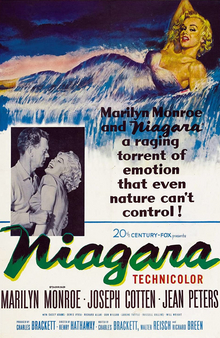A blog formerly known as Bookishness / By Charles Matthews
"Dazzled by so many and such marvelous inventions, the people of Macondo ... became indignant over the living images that the prosperous merchant Bruno Crespi projected in the theater with the lion-head ticket windows, for a character who had died and was buried in one film and for whose misfortune tears had been shed would reappear alive and transformed into an Arab in the next one. The audience, who had paid two cents apiece to share the difficulties of the actors, would not tolerate that outlandish fraud and they broke up the seats. The mayor, at the urging of Bruno Crespi, explained in a proclamation that the cinema was a machine of illusions that did not merit the emotional outbursts of the audience. With that discouraging explanation many ... decided not to return to the movies, considering that they already had too many troubles of their own to weep over the acted-out misfortunes of imaginary beings."--Gabriel García Márquez, One Hundred Years of Solitude
Search This Blog
Friday, December 25, 2015
Niagara (Henry Hathaway, 1953)
Niagara was one of three movies starring Marilyn Monroe that were released in 1953. The other two, Gentlemen Prefer Blondes (Howard Hawks) and How to Marry a Millionaire (Jean Negulesco), were hits, confirming what we now know: that Monroe was a peerless comedian, not, as Niagara wants her to be, a film noir siren. She had done earlier turns in legitimate film noir, a small role in The Asphalt Jungle (John Huston, 1950), larger ones in Clash by Night (Fritz Lang, 1952) and Don't Bother to Knock (Roy Ward Baker, 1952), so this time 20th Century-Fox decided to go all out in exploiting her as a femme fatale. There are many things wrong with Niagara, one thing being that it can't quite decide whether it's a noir thriller or a Technicolor travelogue about the eponymous falls and their various tourist attractions. But what's most wrong about it is its misuse of Monroe, who is not even the real lead character in the film: Her role is decidedly secondary to that of Jean Peters. And she is grotesquely exploited in her part as Rose Loomis, unhappily married to a mentally unstable man (Joseph Cotten) and plotting to have her lover (Richard Allan) bump him off. The studio can't resist dressing her in skin-tight clothes, with high heels that make it impossible for her to walk without bumps and grinds, and flaming red lipstick that's obviously freshly put on even when she's supposed to be waking up in the morning. A producer less under the control of the studio than Charles Brackett (who also wrote the clunky screenplay with Walter Reisch and Richard L. Breen) might have made Rose into a credible character, but here she's only an adolescent boy's fantasy. But even a misused Marilyn is better than no Marilyn at all, as we find out two-thirds of the way through the movie when the focus shifts to the character played by Peters and her grinning ass of a husband (Max Showalter), and we have nothing to marvel at but the Falls. If the screenplay had fallen into the hands of a Hitchcock, Niagara might have been a success, but Henry Hathaway directs as if he's bored by the whole thing.
